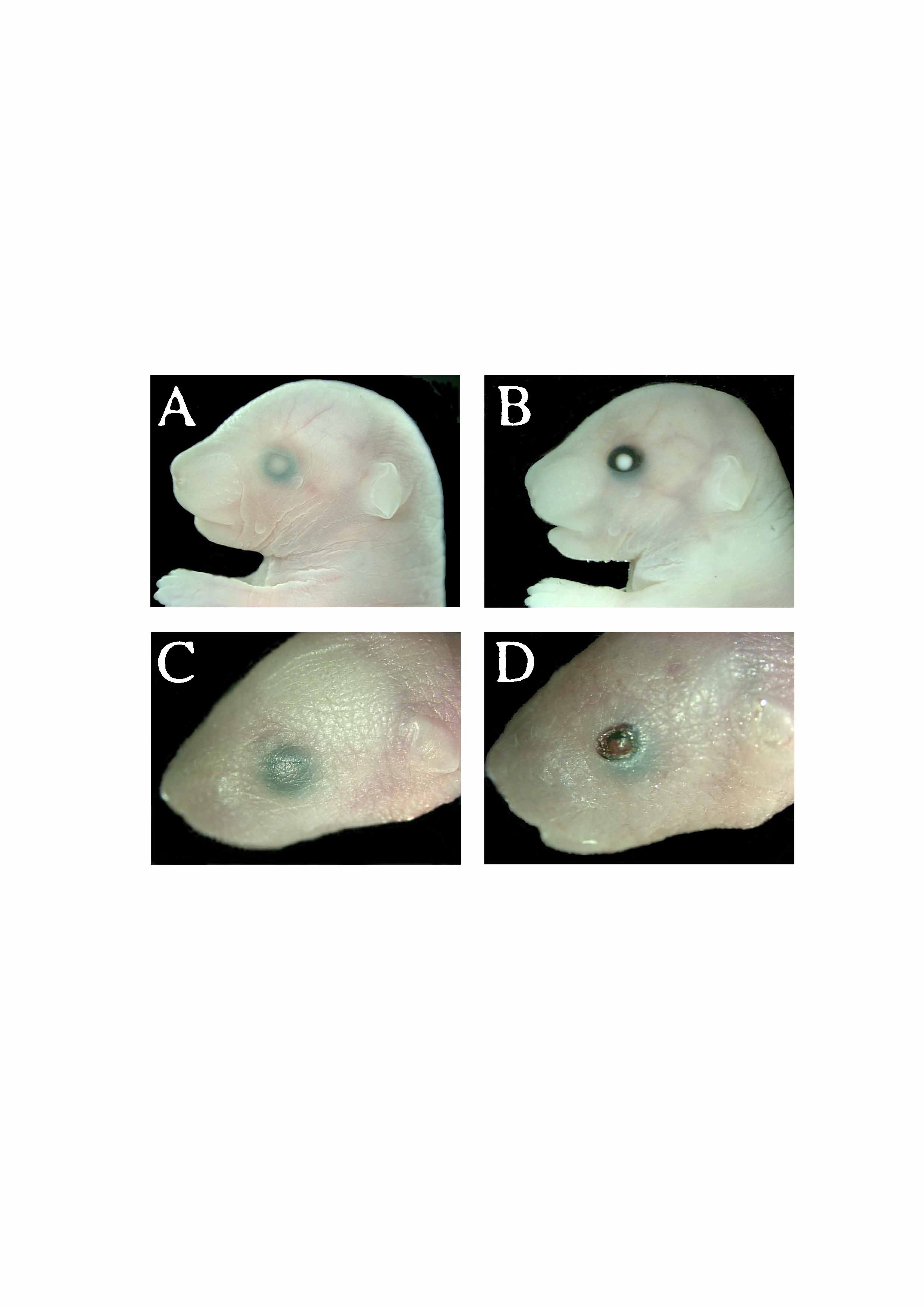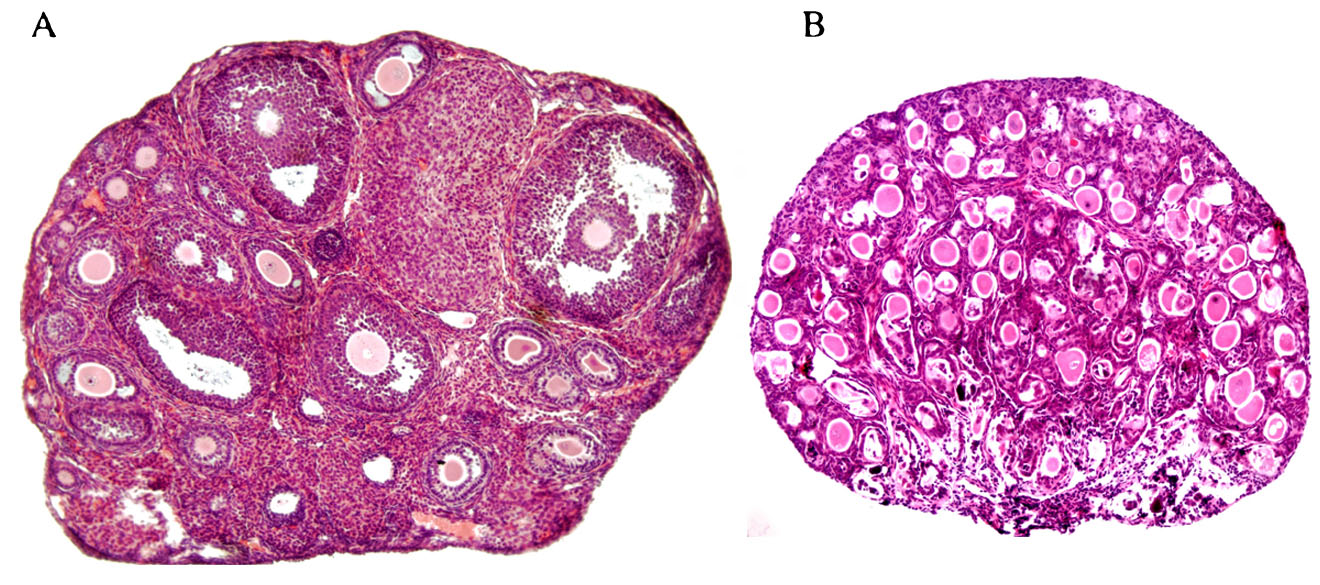Female infertility is a common condition, affecting about 1% of all women. A frequent cause is premature ovarian failure which is a heterogeneous disorder resulting from chromosomal aberrations, genetic conditions, autoimmune ovary destruction, enzymatic defects, infectious or iatrogenic factors. The clinical features consist in incomplete menarche , secondary amenhorrea or early menopause. Our group recently identified a new gene, FOXL2 which belongs to the family of the transcription factor "winged helix forkhead". Mutations in the FOXL2 gene cause the "Blepharophimosis-Ptosis-Epicanthus Inversus" Syndrome, (BPES), where eyelid/forehead dysmorphology in both sexes are associated with sterility in women. To characterize the function of the FOXL2 protein and to understand the molecular mechanisms of ovarian and eyelids development, we created mice with the homologous human gene FOXL2, inactivated, (mice Foxl2 knockout). Males and females mice are smaller than wild type, and show distinctive craniofacial morphology with upper eyelids absent, resembling relevant features of human BPES. Furthermore, in mice as in humans, sterility is confined to females. Gross anomalies in Foxl2 knock out female genitalia started at 2 weeks. Ovary size is reduced and tubes are hypotrophic, indicating reduction in estrogen production. Histological analysis reveals that ovarian follicle development is abrogated at the primordial follicle stage showing that Foxl2 is a selective determinant of ovarian histogenesis with a central role in primordial follicle formation. We are currently investigating the malformations at different stages of mouse development and have begun complementary biochemical approaches in order to clarify its pathogenic pathway. Mice Foxl2 knockout provide means to better understand the pathogenesis of ovarian failure in BPES and to identify relevant FOXL2 transcriptional targets involved in the pathophysiology of reproductive disorders. In the long run, the study of this animal model may provide new tools for intervention and treatment of patients with premature ovarian failure, for whom there is currently no specific therapy. This project has been realized with the collaboration of two other groups, in Italy (University of Modena) and USA (National Institue on Aging - Baltimore). The project is partially founded by the Telethon Foundation. Details of the discovery have been published on the scientific international journal Human Molecular Genetics (Uda et al. 13:1171-1181; 2004).
Immagini:



